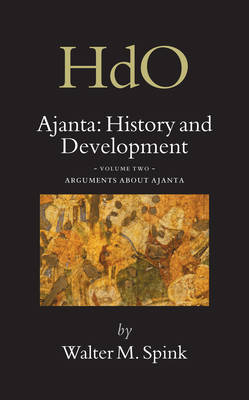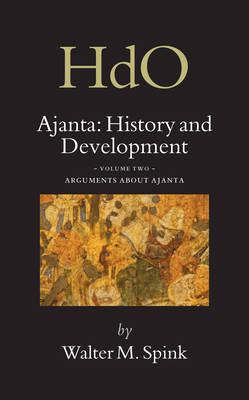
- Afhalen na 1 uur in een winkel met voorraad
- Gratis thuislevering in België vanaf € 30
- Ruim aanbod met 7 miljoen producten
- Afhalen na 1 uur in een winkel met voorraad
- Gratis thuislevering in België vanaf € 30
- Ruim aanbod met 7 miljoen producten
Zoeken
Omschrijving
Volume Two begins with writings by some of the most important critics of Walter Spink's conclusions, interspersed with his own responses, using a thorough analysis of the great Cave 26 to support his assertions. The author then turns to matters of patronage, and to the surprising fact that, unlike most other Buddhist sites, Ajanta was purely "elitist", developed by less than a dozen major patrons. Its brief heyday traumatically ended, however, with the death of the great emperor Harisena in about 477, creating political chaos. Ajanta's anxious patrons now joined in a headlong rush to get their shrines dedicated, in order to obtain the expected merit, before they fled the region, abandoning their caves to the monks and local devotees remaining at the now-doomed site. These "intrusive" new patrons now filled the caves with their own helter-skelter votive offerings, paying no heed to the well-laid plans of the years before. A similar pattern of patronage is to be found in the redecoration of the earlier Hinayana caves, where the careful planning of the work being done during Harisena's reign is suddenly interrupted by a host of individual votive donations. The volume ends with a new and useful editing of Ajanta inscriptions by Richard S. Cohen.
Specificaties
Betrokkenen
- Auteur(s):
- Uitgeverij:
Inhoud
- Aantal bladzijden:
- 348
- Taal:
- Engels
- Reeks:
- Reeksnummer:
- nr. 18
Eigenschappen
- Productcode (EAN):
- 9789004150720
- Verschijningsdatum:
- 1/05/2006
- Uitvoering:
- Hardcover
- Formaat:
- Genaaid
- Afmetingen:
- 164 mm x 246 mm
- Gewicht:
- 766 g

Alleen bij Standaard Boekhandel
+ 488 punten op je klantenkaart van Standaard Boekhandel
Beoordelingen
We publiceren alleen reviews die voldoen aan de voorwaarden voor reviews. Bekijk onze voorwaarden voor reviews.








